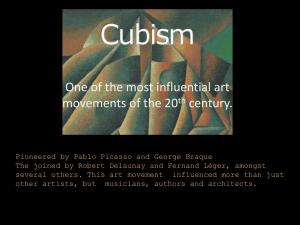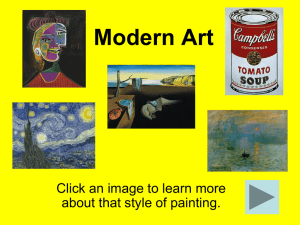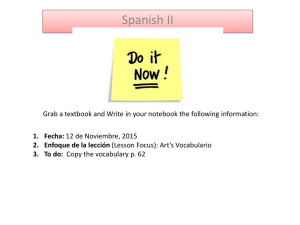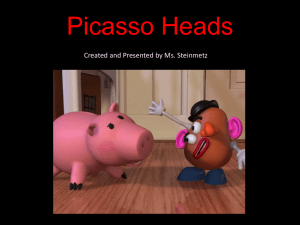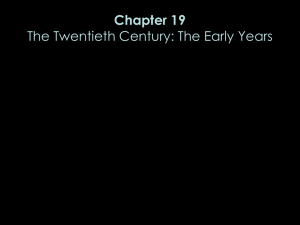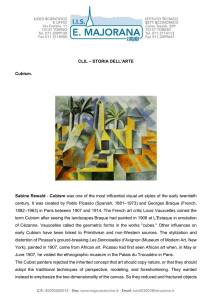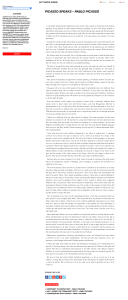New Hyde Park 2014-15 Studio Art Daily Plans March 23
advertisement
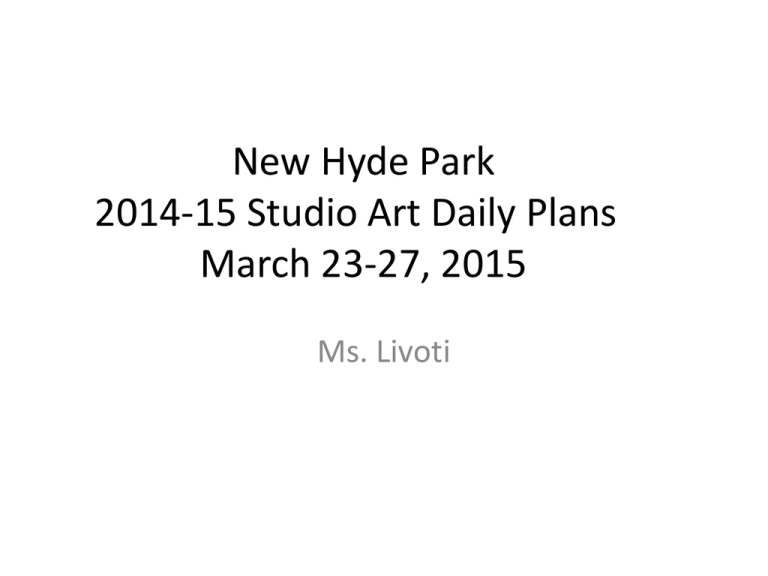
New Hyde Park 2014-15 Studio Art Daily Plans March 23-27, 2015 Ms. Livoti Monday 3/23 Aim: How can you begin your final symbolic portrait Chinese Brush Painting? Do Now: Create a Japanese Haiku about your symbolic self-portrait. In Japan, the art of painting with ink is called Sumi-e. Both cultures create paintings about the beauty of nature. A haiku is a Japanese poem, with a total of 17 syllables. The first line is 5 syllables, the second is 7, and the third is 5. HW: Create an ABSTRACT self-portrait. Research examples of abstract portraits by Pablo Picasso! Due Thursday 3/26 Youth Art Week! Movie Mania Today! Tues 3/24 Aim: How can you add Chinese characters to your Chinese Brush Painting Symbolic Self Portrait? Do Now: review for quiz Youth Art Week: Wacky Watercolors today! HW: Create an ABSTRACT self-portrait. Research examples of abstract portraits by Pablo Picasso! Due Thursday 3/26 Wed 3/25 Aim: How can you complete your Chinese brush painting? Do Now: Quiz NAHS induction ceremony today! During Lunch: Art Is! Banner HW: Create an ABSTRACT self-portrait. Research examples of abstract portraits by Pablo Picasso! Due Thursday 3/26 Thurs 3/26 Aim: What is Analytic Cubism? Do Now: Grade and Assess your brush painting project Tomorrow: Field Trip to NCMA! Wear your fav color and/or NAHS Sweatshirt! HW: Create an ABSTRACT self-portrait. Research examples of abstract portraits by Pablo Picasso! Due Thursday 3/26 Design Principal Focus • Unity: Sense of togetherness. Created through using simplified art elements such as shapes, lines and values. Also, similar art elements throughout a design create unity. • Variety: Creating interest by using different art elements and techniques within a composition. What is creating unity? What is creating variety? Do you think the same artist created this image? Why or why not? Page 1: GEORGES BRAQUE (1882-1963) 'Violin and Jug', 1910 (oil on canvas) (French, 1882–1963) Painter, sculptor, printmaker and collagist. Page 2: Pablo Picasso Portrait of Wilhelm Uhde (1910) Spanish, 1881-1973 Painter, sculptor, printmaker. Along with Braque, created Cubism, which drastically changed the way people interpreted a work of art. • Cubism was developed between about 1908 and 1912 in a collaboration between Georges Braque and Pablo Picasso. • Art does not have to copy nature, you do not have to use traditional techniques of perspective, modeling, and foreshortening. • Emphasizes that a painting is being done on a flat surface. Simplified and fractured objects into geometric shapes, and painted them so they did not appear three dimensional. • They also used multiple or contrasting vantage points. Cubism Analytic Cubism • Analytic Cubism: Cubist work up to 1910, the subject of a picture was usually understood or recognized. • Called “Analytic” because a subject was analyzed, the artist broke down the subject into its various parts, then reassembled them into a new image that still represented the object. • Paint was the main material being used. • There was still a sense of representing the subject of the painting. • Characteristics are neutral colored paint, geometric shapes shaded from light to dark. Create your own abstract design with your name hidden in it! Use a RULER. Write your name out in CAPITAL letters. Space the letters out around your paper and write them so they are tilted. Connect the letters of your name using the ruler and intersecting lines. Stretch the lines out so they touch the edges of the paper. You should now have hidden your letters, and created a number of different shapes on your paper Friday 3/27 Field Trip! Coverage Plans
